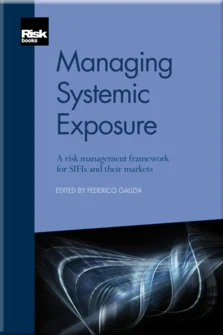Managing Systemic Exposure: A Risk Management Framework for SIFIs and their Markets
Managing Systemic Exposure: A Risk Management Framework for SIFIs and their Markets
SIFIs and the Financial Crisis
Remuneration at Large Financial Services Firms
What Drives Banking Industry Ratings? An Empirical Analysis
Leverage: A Research Agenda for SIFIs
Bank Off-balance-sheet Leverage: Some Lessons from the Financial Crisis
Systemic Wrong-way Risk
The OTC Derivatives Market: Risks and Regulations
Balance Sheet Management for SIFIs
Managing Concentration Risk
Capital Adequacy Ratio: A Managerial Framework
Appendix: G-SIB Regulatory and Supervisory Regime
For most of the post-war period, exposure to systemically important financial institutions (SIFIs) was assumed to be risk-free, and the wholesale financial markets thrived on the large volumes of unsecured bilateral activity between SIFIs. This system started to break down at the beginning of the financial crisis of 2007–09; secured lending and collateralised trading became the dominant paradigm, even among institutions that used to share trust as part of an elite club. This trend has been supported by policymakers through regulations that focus on minimising the adverse externalities caused by SIFI distress or failure. Academic research is also developing models to gauge SIFIs contribution to systemic risk.
This book adopts the point of view of an institution wishing to manage its exposure to systemic risk and, more specifically, to other SIFIs. Based on both history and accepted risk management principles, we think there are obvious steps that can make a financial firm’s business model more resilient. Some of the contributions presented here distill lessons from the events leading up to
Copyright Infopro Digital Limited. All rights reserved.
As outlined in our terms and conditions, https://www.infopro-digital.com/terms-and-conditions/subscriptions/ (point 2.4), printing is limited to a single copy.
If you would like to purchase additional rights please email info@risk.net
Copyright Infopro Digital Limited. All rights reserved.
You may share this content using our article tools. As outlined in our terms and conditions, https://www.infopro-digital.com/terms-and-conditions/subscriptions/ (clause 2.4), an Authorised User may only make one copy of the materials for their own personal use. You must also comply with the restrictions in clause 2.5.
If you would like to purchase additional rights please email info@risk.net











